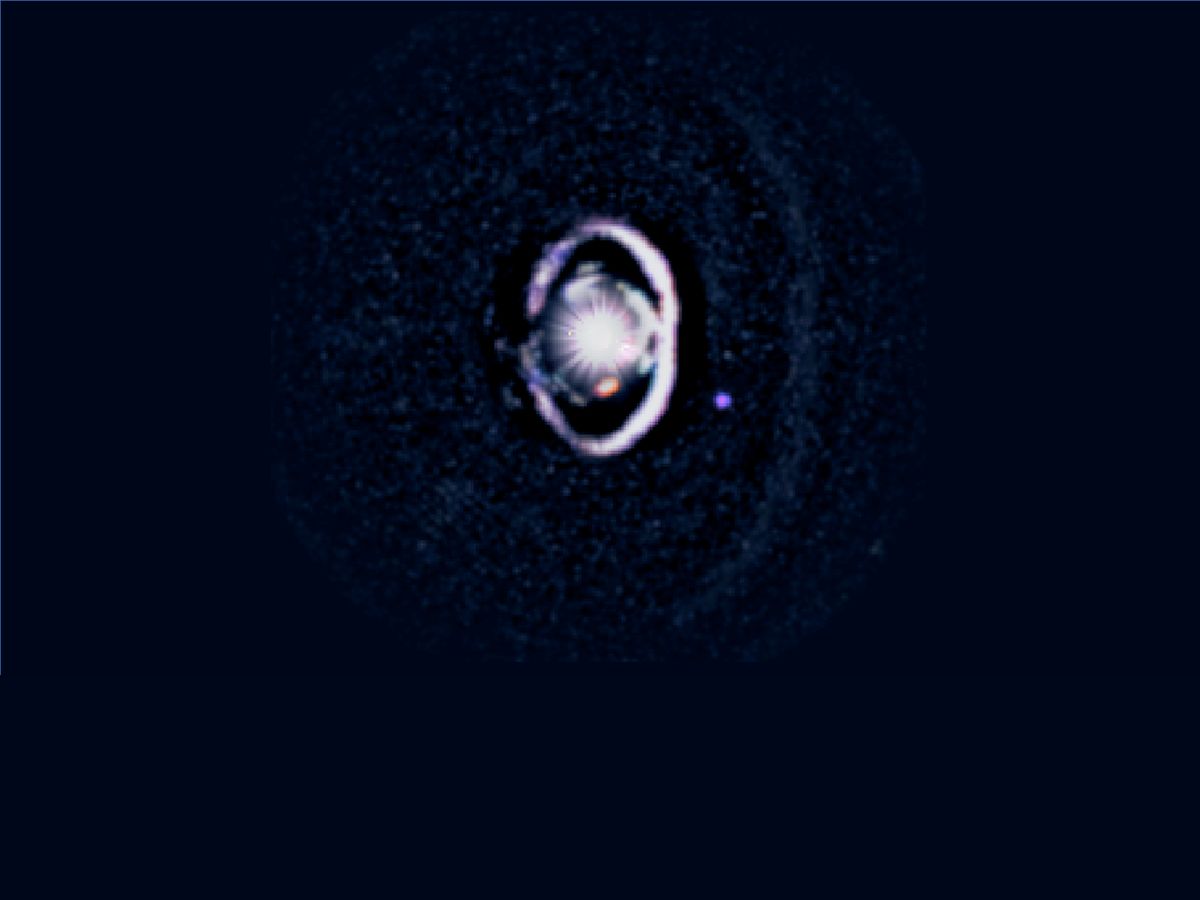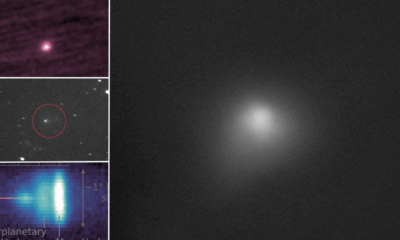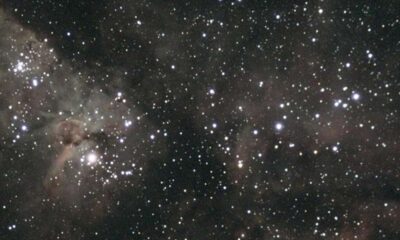Science
Scientists Capture Image of Baby Planet Five Times Larger Than Jupiter

Researchers have successfully captured an image of a baby planet that is approximately five times the mass of Jupiter. This remarkable achievement was documented in a study published in *The Astrophysical Journal Letters* and is attributed to a team of scientists supported by NASA. The planet, located in the system TYC 8998-760-1, is a significant discovery in the field of exoplanet research.
The image showcases a young planet that is still in its formative stages. It orbits a star that is about 300 light-years away from Earth, a distance that highlights the vastness of our galaxy. The team utilized advanced imaging techniques to isolate the light from the planet, minimizing the overwhelming glare from its parent star. This careful approach allowed them to obtain a clear view of the planet, which has been dubbed TYC 8998-760-1 b.
Significance of the Discovery
The significance of this discovery extends beyond its sheer size. With a mass estimated at five times that of Jupiter, TYC 8998-760-1 b offers valuable insights into planet formation and the characteristics of giant exoplanets. Scientists believe that studying such young planets can help them understand the processes that lead to their formation, as well as the conditions necessary for the development of planetary atmospheres.
In the study, the authors emphasized that observing young planets like TYC 8998-760-1 b provides a unique opportunity to analyze their atmospheres and surface conditions. This can potentially reveal information about the chemical compositions and evolutionary pathways of exoplanets, enhancing our understanding of how different planetary systems form and evolve.
Future Implications
The implications of this discovery are profound for future astronomical research. As technology advances, astronomers anticipate being able to capture more images of distant exoplanets. This could lead to the identification of potentially habitable worlds in the far reaches of our galaxy.
The findings from this study may also encourage further exploration of TYC 8998-760-1 and its planetary system. Future missions could focus on gathering more data about the star and its surrounding planets, providing further context for understanding the dynamics of young planetary systems.
The ability to photograph a planet of this magnitude underscores the ongoing advancements in astrophysics and observational techniques. As scientists continue to explore the cosmos, discoveries like TYC 8998-760-1 b remind us of the universe’s complexity and the exciting possibilities that lie ahead in the field of planetary science.
-

 Technology4 months ago
Technology4 months agoDiscover the Top 10 Calorie Counting Apps of 2025
-

 Health2 months ago
Health2 months agoBella Hadid Shares Health Update After Treatment for Lyme Disease
-

 Health3 months ago
Health3 months agoErin Bates Shares Recovery Update Following Sepsis Complications
-

 Technology3 weeks ago
Technology3 weeks agoDiscover 2025’s Top GPUs for Exceptional 4K Gaming Performance
-

 Technology4 months ago
Technology4 months agoDiscover How to Reverse Image Search Using ChatGPT Effortlessly
-

 Technology2 months ago
Technology2 months agoElectric Moto Influencer Surronster Arrested in Tijuana
-

 Technology4 months ago
Technology4 months agoMeta Initiates $60B AI Data Center Expansion, Starting in Ohio
-

 Technology4 months ago
Technology4 months agoRecovering a Suspended TikTok Account: A Step-by-Step Guide
-

 Health4 months ago
Health4 months agoTested: Rab Firewall Mountain Jacket Survives Harsh Conditions
-

 Lifestyle4 months ago
Lifestyle4 months agoBelton Family Reunites After Daughter Survives Hill Country Floods
-

 Technology3 months ago
Technology3 months agoUncovering the Top Five Most Challenging Motorcycles to Ride
-

 Technology4 weeks ago
Technology4 weeks agoDiscover the Best Wireless Earbuds for Every Lifestyle



















